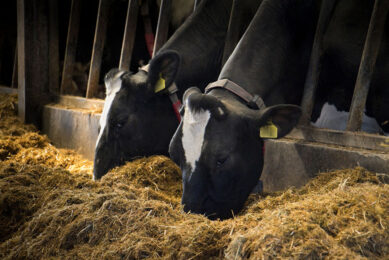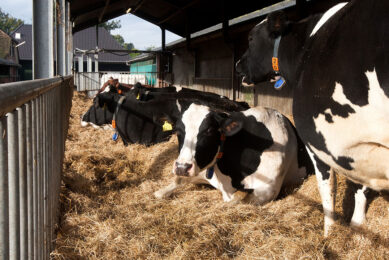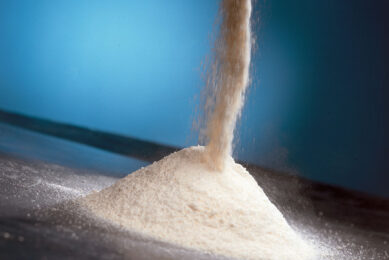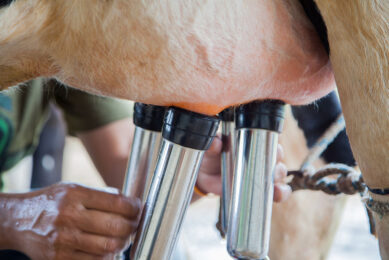Know your fibres to maximise benefits
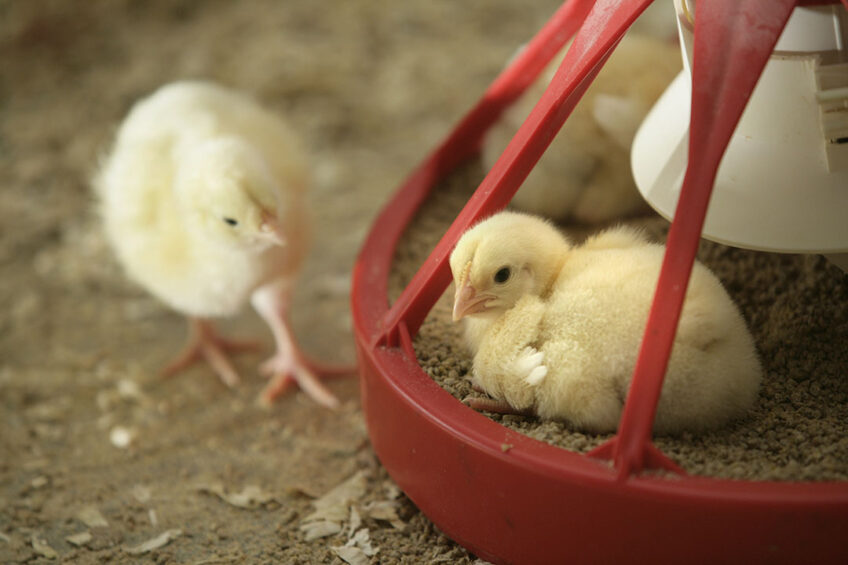
The addition of fibre in animal diets is important for a range of functions including gut health. More cost-effective and accurate total dietary fibre analysis is now possible due to the emergence of NIR technology. This will help to formulate better diets, with a focus on the right type of feed ingredients and fibre.
Feed and other input costs, such as transport and energy, are expected to stay high for animal production for the foreseeable future and that’s without considering the availability and cost of labour, and the complexity and high cost of logistics (RaboResearch, Dec 2021). All stakeholders need to increase their capacity to be flexible to adapt to this market context and therefore it’s the perfect time to improve our knowledge regarding feed ingredients and make sure we’re using them in the best way.
Understanding fibre
Recently, extensive work has been done to improve our understanding of fibre as a tool to compensate for restrictions on the use of products (e.g., antibiotics, zinc and copper) that were included in diets to improve gut health. In addition to the benefits fibre can bring, in terms of gut health there is a need to understand and better characterise this substrate to avoid any issues in the field, determine best use and optimise value. Determining new criteria to describe fibre is important as the traditional terms – crude fibre (CF), neutral detergent fibre (NDF) and acid detergent fibre (ADF) – don’t provide enough information about the total content of dietary fibre and its functionality, especially the soluble part.
Total dietary fibre
Today, the most precise estimation of fibre is the analysis of total dietary fibre (e.g., the sum of the total non-starch polysaccharides NSPs + lignin), however there was, until recently, limited data reporting for NSPs and lignin because the methodologies used to hydrolyse fibre into its monomeric components are laborious and expensive (AB Vista, Technical white paper, 2021). More cost-effective and accurate total dietary fibre analysis is now possible due to the emergence of NIR technology. This has allowed us to determine the total content of dietary fibre and the different NSPs, soluble and insoluble components, in a robust and easy way that makes those measurement usable in practical feed formulation (Gomes et al., 2020).
ANTIBIOTIC REDUCTION – special focus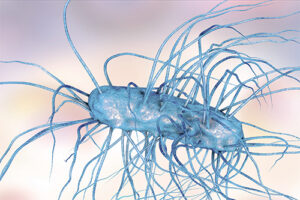
Antibiotic reduction is a major topic in the livestock sector and the pressure is on to reduce their use. This special will focus on measures that could be taken to reduce and eventually move away from antibiotic use in the livestock sector. Find out more…
Proper application
Having the relevant criteria and the tools to analyse it routinely are prerequisites, but they are not sufficient to guarantee proper application. Animal physiology matters, especially when it comes to fibre. In fact, as fibre is undigestible, the only way to optimise fibre utilisation is to increase its fermentation by the microbiome present in the hindgut. However, the establishment of this microbiome is age-dependant and young, immature animals have a microbiome that doesn’t allow them to extract the value of fibre.
Figure 1 – Effect of increasing soluble arabinoxylan (soluble A+X) content on feed conversion ratio.
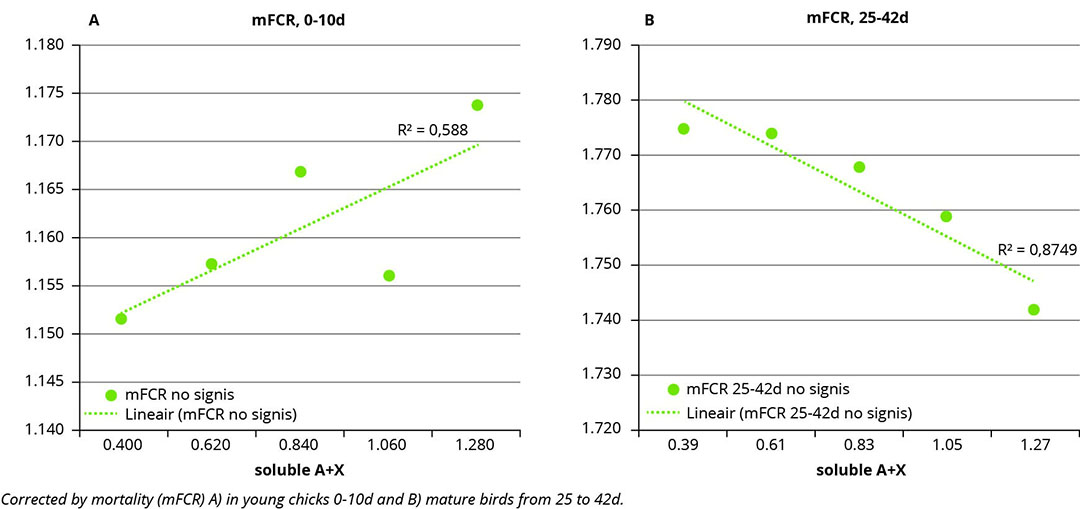
In fact, in a recent study it was demonstrated that chicks from 0 to 10 days struggled to translate the energy from fibre into growth performance when increasing the soluble arabinoxylan content (A+X, a key component of dietary fibre that triggers fibre fermentation in the lower gut) (Figure 1A). However, the same increase of soluble arabinoxylans will enable more mature birds to achieve the best performance (Figure 1B). Most probably, as young chicks do not have an established microbiome that can ferment the soluble A+X, and thus extract the energy it contains, they didn’t use this substrate and that impaired their performance. This result tells us that high concentrations of soluble A+X is not desirable at early stages as birds lack the capacity to deal with it because of an immature gut (Bautil et al., 2019). In fact, ensuring early capacity to degrade fibre will avoid performance losses and can even improve performance. On the other hand, it appears that there is a soluble A+X requirement in more mature birds which allows them to achieve maximum performance.
Figure 2 – Effect of increasing soluble arabinoxylan (soluble A+X) content on feed conversion ratio.
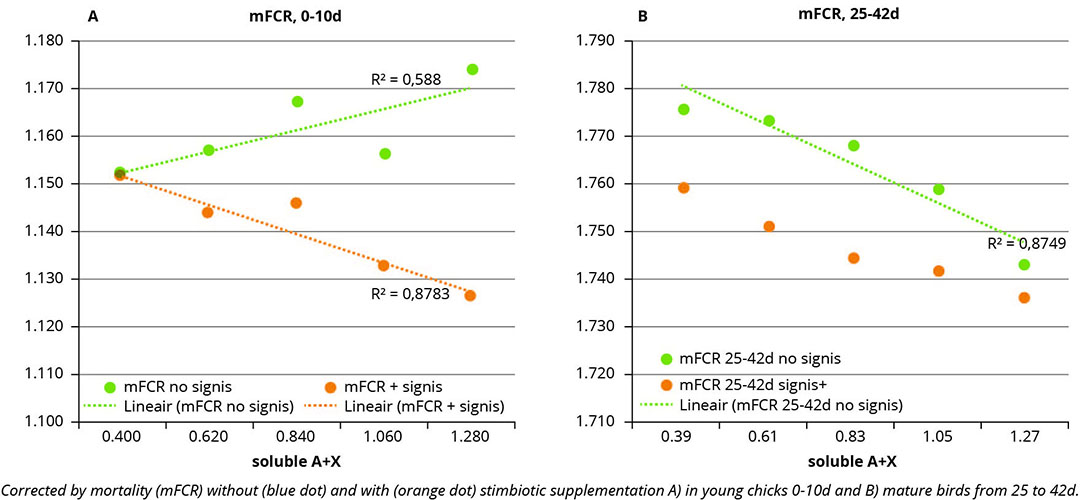
Introducing stimbiotics
There are a plethora of products that are commercially available to fill the gap of high inclusion of minerals such as zinc and copper and the removal of antibiotics, but only the ‘stimbiotic’ category can claim to influence the fibrolytic microbiome and therefore the dietary fibre fraction itself by stimulating the establishment of an appropriate microbial population. In fact, stimbiotic supplementation generates specific beneficial ‘carbohydrates’ in the hindgut and provides a signal that stimulates the establishment of the microbial communities needed to degrade those fibre components more efficiently. This occurs by stimulating bacteria in the hindgut to produce their own fibre degrading enzymes and enhance the production of SCFAs and thus improve performance (Gonzales-Ortiz et al., 2021). It is the balance between beneficial products of fermentation such as butyrate and other SCFAs and products such as ammonia, amines, indoles (from protein fermentation) that determine the health status and integrity of the intestinal absorptive surface (Apajahlati and Vienola, 2016). As a result, supplementing young birds with stimbiotics gives them the tool they need to utilise dietary fibre and translate that into performance. This means that if soluble A+X is not desirable for young chicks per se, it can represent a source of energy for the host when birds are fed with a stimbiotic supplemented feed (Figure 2A). This effect persists throughout the lifetime of the birds, making the hindgut more efficient at degrading fibre and developing good gut resilience that also led to better performance (Figure 2B).
Conclusion
If fibre is a tool that we should consider for improving gut health while addressing the need to use alternative feed ingredients, it needs to be done in a secure manner, considering the fibre characteristics of each ingredient and the overall amount and properties in the total feed. Thanks to a global database, the team at AB Vista are now able to provide an accurate picture of fibre in both the ingredients and the complete feed, helping nutritionists to apply an optimal customised strategy to extract the hidden value of fibre and achieve optimal productivity.
References available on request.




